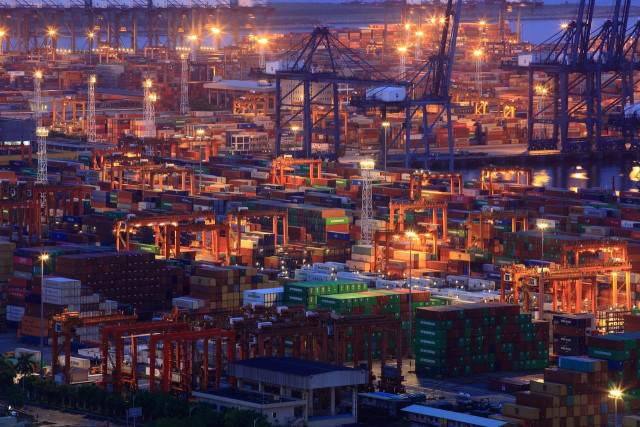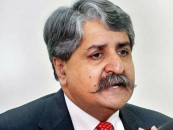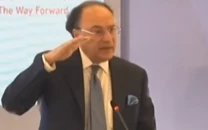Can we afford to ignore exports?
Unless corrective steps are taken, substantial export growth may remain elusive

Whereas the Pakistan Tehreek-e-Insaf (PTI) government understandably takes credit for a meteoric rise in home remittances, it tries to downplay the fact that growth in total exports remains elusive.
We hear about the government’s decision to allow continuation of energy subsidy on exports; we hear about the reduction in tariffs on raw material for export industries; we hear about incentive packages for promoting exports of certain industries and we hear about how the slashing of interest rate – from 13.25% to 7% – will eventually boost exports.
But when these and other export-boosting measures will lead to larger inflows of export earnings cannot be predicted, more so because the second wave of Covid-19 threatens to make global demand recovery W-shaped, instead of V-shaped.
First quarter’s recovery in large-scale manufacturing (LSM) is being presented by the PTI government as a harbinger of good times for exports. But unless policymakers dissect the structural problems of various export sectors and take corrective measures, an immediate and substantial growth in exports of goods and services may remain elusive.
Pakistan’s total exports remain far below the potential for several structural reasons. One major reason is that the country has so far done very little to promote exports of services. Another major reason is that governments never conduct a cost and benefit analysis of the incentives given to different sectors of goods’ exports.
Hundreds of billions of rupees worth of direct and indirect subsidies were dished out in the past five years to goods’ exporters. But they failed to raise export earnings even by a billion dollars a year.
Pakistan’s goods’ exports had fetched $23.885 billion back in FY15. In FY20, the figure tumbled to $21.394 billion, according to the Pakistan Bureau of Statistics (PBS), partly reflecting the global recession triggered by the Covid-19 pandemic.
But even in FY19 (when there was no Covid-19 and hence no lockdowns at home or abroad), exports of goods totalled $22.979 billion.
Why it is so that merchandise exports of a country of 220 million people remain so low? And why it is so that the government never bothers to conduct a detailed analysis of all the monetary and non-monetary incentives offered to merchandise exporters?
Unmet targets
We hear about lots of excuses for slow or no growth in exports of goods. But no policymaker tells us which sector or sectors of merchandise exports actually disappointed the nation by not meeting the targets assigned to them along with rich incentives.
It is time to link all export-related subsidies or incentives to the performance of targeted sectors, begin third-party audit of how the same are utilised by exporters to boost export earnings and see how much incentives they actually deserve based on how much additional foreign exchange they earn. The sooner it’s done the better it’ll be.
Exports of services, too, continue to perform below potential and have failed to show any substantial growth over the past five years.
In FY15, Pakistan earned $5.741 billion through exports of services, according to PBS data. After four years, the earnings marginally rose to $5.966 billion in FY19, and slipped to $5.449 billion in FY20 when the global economy slumped due to Covid-19.
Merchandise exports during the current fiscal year are expected to easily hit the $24 billion mark and services exports can bring in $6 billion at best. Together that makes $30 billion.
If this turns out to be the case, and July-October performance suggests no better outlook, then Pakistan is sure to book a huge deficit in trade of goods and services combined.
According to the State Bank of Pakistan, the balance of trade in goods and services remained negative at $7.533 billion in the first four months of current fiscal year, ie July-October 2020.
Remember that chances for narrowing the trade deficit by containing imports of goods or services are very slim as the country is trying to reverse last fiscal year’s contraction and boost its gross domestic product (GDP) by 2% in the current fiscal year.
Structural woes
In case of exports of services, we should appreciate that services’ exporters seldom get a direct subsidy and can benefit very little from even those measures that can help them grow indirectly.
The structural problems facing services’ exports include absence of a dedicated services’ export policy framework, absence of an umbrella organisation for export promotion, multiple rules and regulations governing exports of services, low level of technological innovation and advances, over-reliance on foreign countries for even keeping our information and communication technology (ICT) sector afloat and dearth of higher educational institutions that can impart high-standard education and training to young professionals and entrepreneurs.
According to a 2018 report of the International Monetary Fund (IMF), Pakistan’s position in services exports was 85th – far below than even not so tech-savvy countries like Indonesia (40th), Vietnam (51st), Sri Lanka (65th), Kazakhstan (70th) and Azerbaijan (79th).
On the other hand, China and India were ranked fifth and seventh largest exporters of commercial services respectively.
In FY20, Pakistan’s ICT sub-sector earned about $1.5 billion whereas all other segments of services sector including finance and insurance, travel and tourism and transportation together earned $4 billion. The ICT sector’s exports can be doubled within a year or two.
PTI had promised in its manifesto to boost ICT exports but so far this promise has remained unfulfilled. Unlike other segments of the services sector, ICT can be developed around micro units manned by a few professionals and skilled workers – and even around individuals.
All the government needs to do is to help them with simple-to-follow policy guidelines and offer them startup capital on easy terms.
The writer is an electronics engineer and pursuing master’s degree
Published in The Express Tribune, December 14th, 2020.
Like Business on Facebook, follow @TribuneBiz on Twitter to stay informed and join in the conversation.



















COMMENTS
Comments are moderated and generally will be posted if they are on-topic and not abusive.
For more information, please see our Comments FAQ